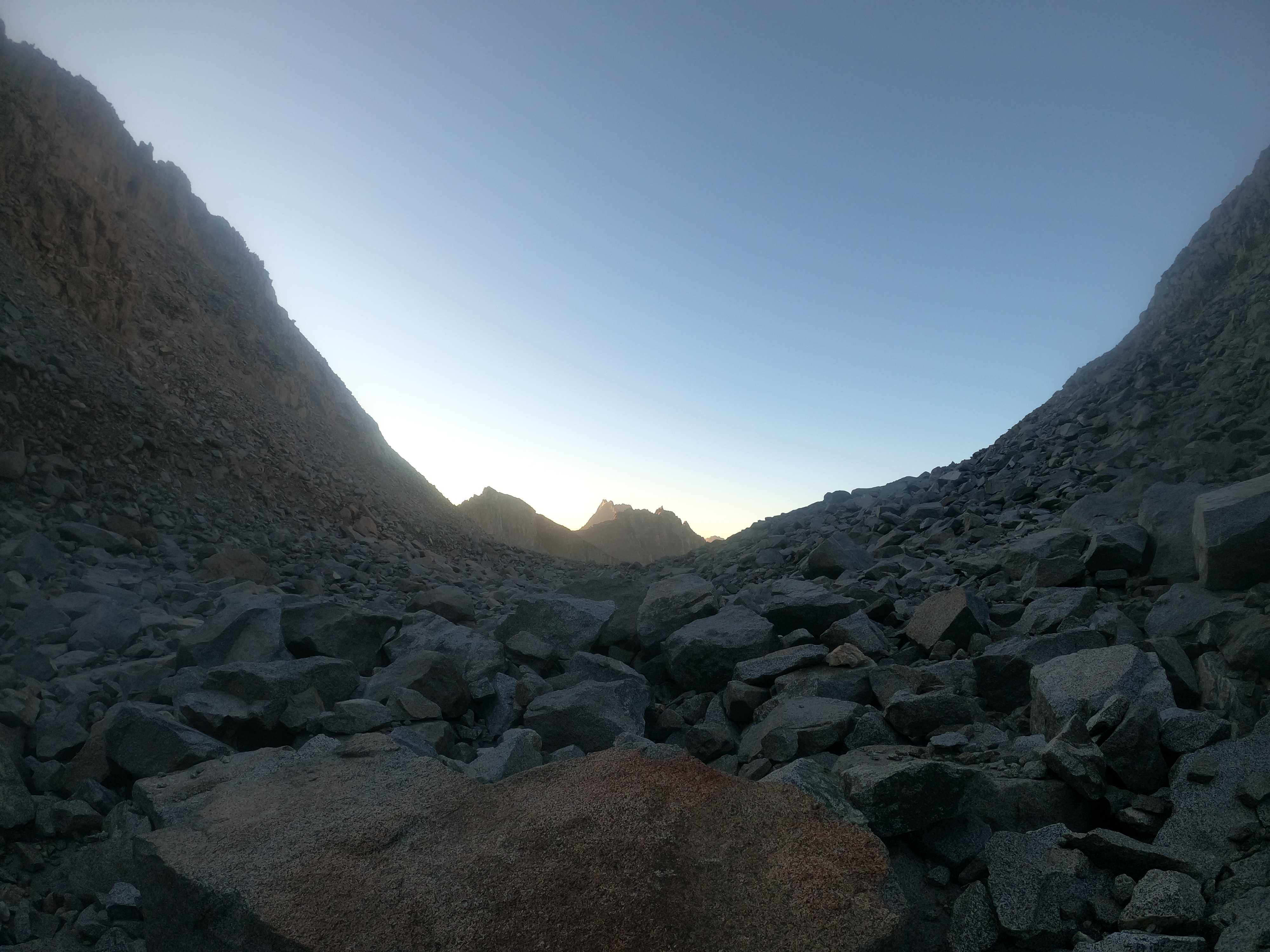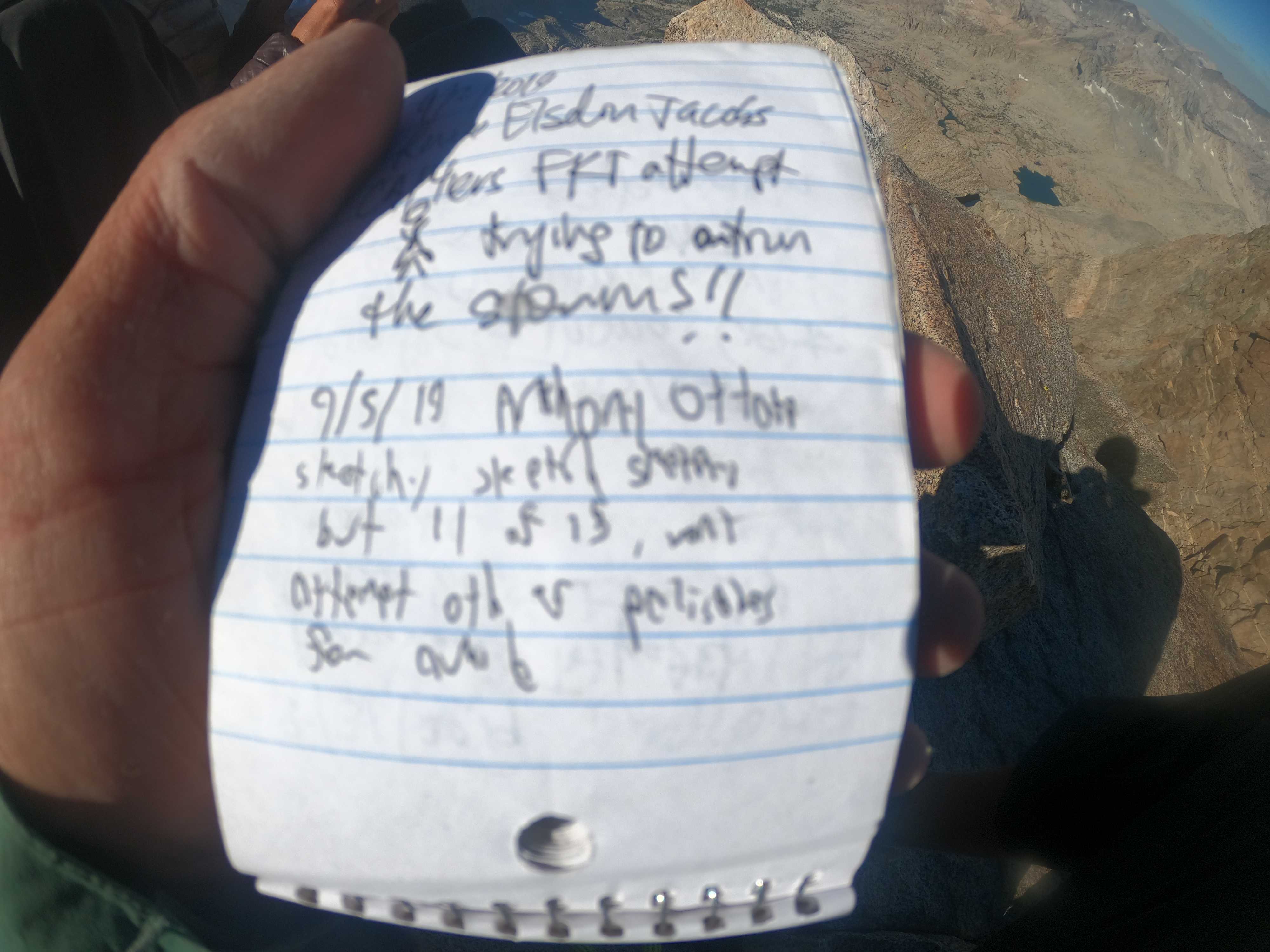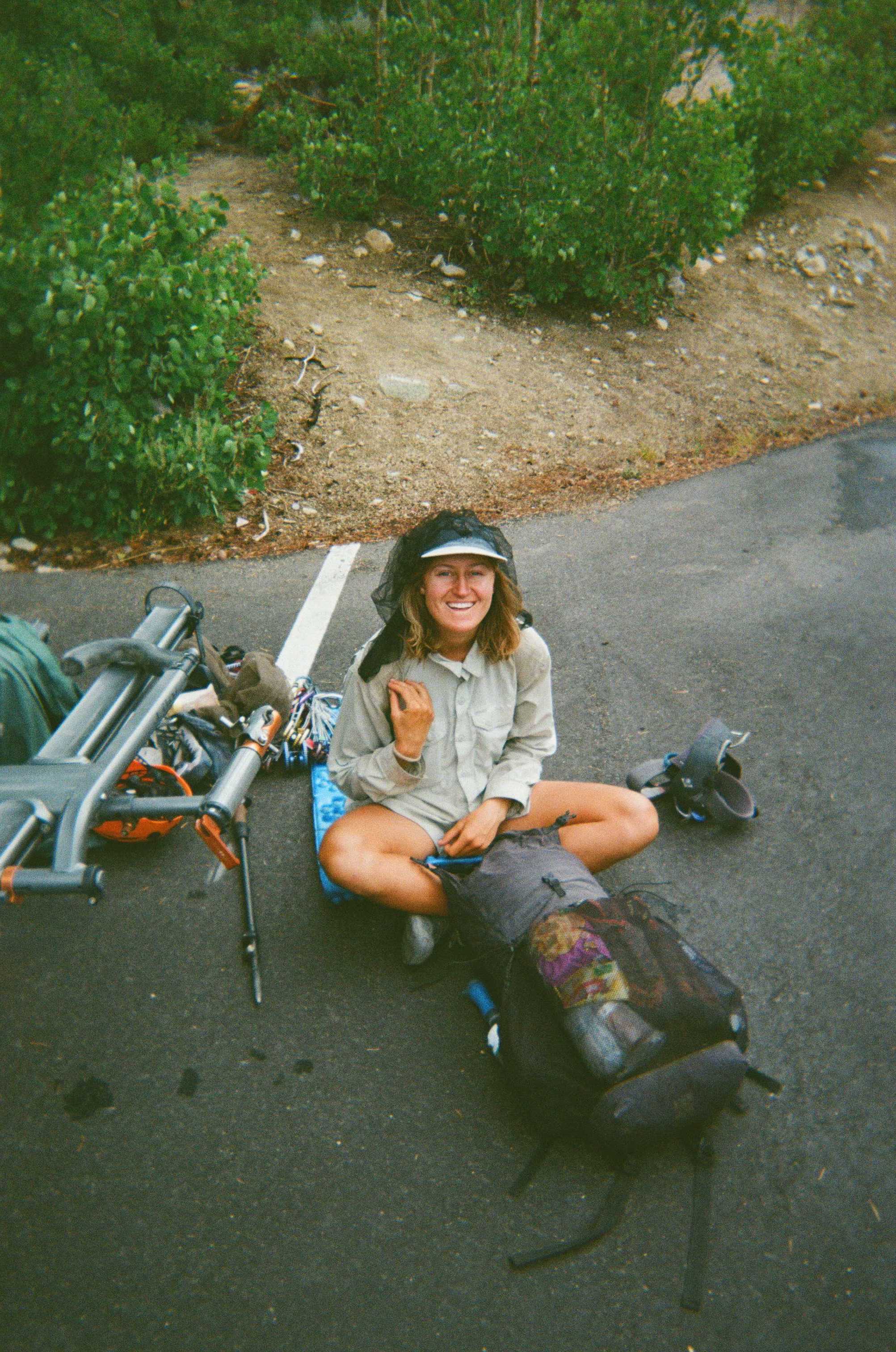Polemonium Peak and Mount Sill
August 2022
Polemonium Peak has shunted my efforts to reach its cliffy summit for several years. I stubbornly returned to the Bishop Pass Trailhead for my fourth attempt at the peak. To add insult to injury, it was also my last California Fourteener, and so each failed attempt was even more crushing than the last.
Storms in the forecast all week didn’t give me any more confidence this go around. But Ari and I nevertheless packed our bags to the brim, with a rope and trad rack in tow, and headed up towards the Palisades. We did some casual training at Pine Creek weeks beforehand, running some laps on easy multi-pitch trad routes, and so we both felt pretty good in the alpine together.
We made short work of the approach, climbing to Bishop Pass, and traversing over both Thunderbolt Pass and Potluck Pass in the span of a few hours. We set up basecamp and seriously debated going to the summit that afternoon. But ominous clouds, rising high into the sky (a sign that lightning may be developing), kept us at camp for the rest of the day. We talked, read, and napped until sundown. After scarfing down some food, we drifted off to sleep, our alarms set for 3 a.m.
We rose in the unforgiving chill of the night, packed our summit bags, and cracked on. The skies were clear, but this was no guarantee that we’d have good weather for the remainder of the day. Storms can roll in out of nowhere in the Sierra. A totally clear sky can evolve into a raging thunder storm in a matter of minutes. Eventually, first light allowed us to bag our headlamps, and we scree hopped arduously to the foot of the Polemonium Glacier. I had climbed Mt. Sill last year, but since Ari had not, we decided to summit Sill first, and then traverse the ridge over to Polemonium.



R.J. Secor says “all chutes go on Mt Sill” and so we picked a random one and sent it up. We got cliffed out below the summit, but found some stiff class three ledges to get us to the ridge. A couple heady moves on the ridge proper saw us to the summit, which was even more spectacular than I remembered it being. We had little time to celebrate, and soon were off for Polemonium. All the while, clouds were forming in the distance.
Within thirty minutes, we found ourselves looking down at the U-notch below Polemonium’s infamous knife-edge ridge. There are a couple ways to get down to the notch. One can scramble down a class four chute, and then work his way up some precarious chockstones. This is what I did last year while attempting this route solo. Or one can rappel down a short section of class five rock to the notch. Since we had the gear, we chose the latter. After a few minutes, we were safely at the notch, below the knife-edge. I tied in and climbed on. The climbing was fairly easy, but extremely airy. I slung a couple hollow-sounding blocks and placed one other piece of protection on my way up, which was enough to see me to the top of the ridge. I belayed Ari as she made short work of the climb, then we made an easy traverse to the summit. It was a great feeling to finally finish all the Fourteeners, especially after trying and failing at Polemonium several times over the seasons.
We found Anthony’s signature in the summit register, which said “sketchy sketch sketchy!” He soloed the ridge years ago and said it was way out of his depth for the time. It didn’t hold him back long though, because a couple weeks after he climbed Polemonium, we went back for Thunderbolt and Starlight, two more technically challenging peaks in the Palisades. Once back in the city, it is easy to forget the bad parts of our alpine adventures, and just remember the glory.


Ari and I took in the stunning views and then made our way back down. I descended on toprope and placed gear liberally for Ari to down-led and clean gear after me. In this fashion we made it back to the u-notch. Wanting to be back to safety quickly, I then climbed the thirty-five foot fifth class face. While I was technically on-belay, it was a no-fall-zone since I couldn’t place any gear on the face. Eventually we made it back to easy terrain, and shot down to the Polemonium Glacier.
After a couple more hours, we were back at camp. We ate a quick snack, packed up, and made our way up and over Potluck Pass. The whole morning, the sky filled more menacingly with dark clouds, and claps of thunder and bolts of lightning presented themselves on our descent. Fortunately, we had an early enough to start as to be off the exposed summits before the storm hit. On our way back, rain started here and there, and huge claps of thunder boomed relentlessly. Once back on trail, we were surprised to see a few intrepid (or foolhardy) hikers heading up; we were glad to be going the opposite direction.

We made it back to the car, victorious. It was a supreme relief: a six-year climbing project complete, safely at the van just as the storm intensified, and taking it all in with my best friend on top of all that. We drove back to town, and parted ways. I headed up to Pine Creek to relax for a day or two. The next morning I was plotting more ambitious goals to fill the place of this one.